Name Salome Salome Parents Herodias, Herod II | ||
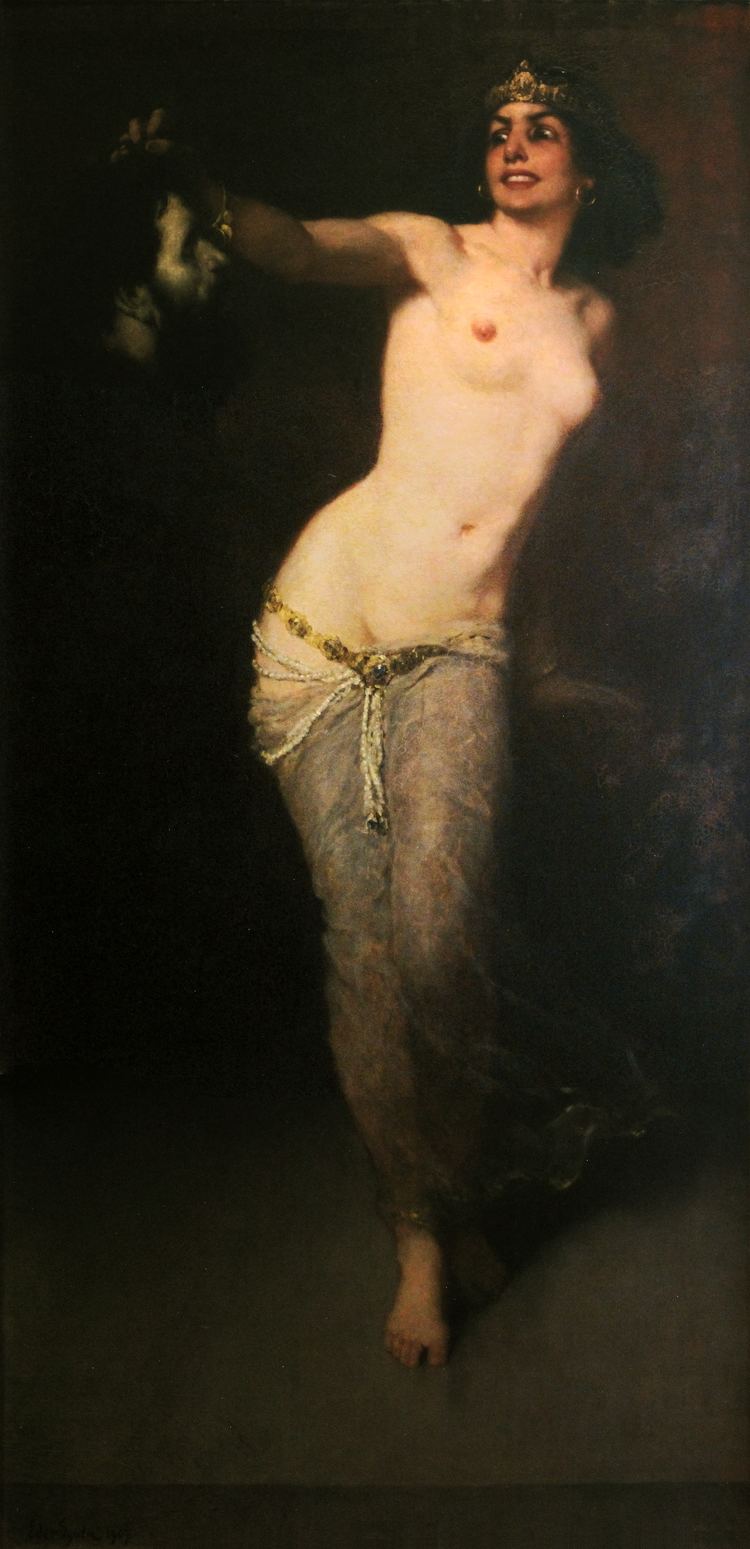 | ||
Grandparents Herod the Great, Aristobulus IV, Berenice Cousins Herodias, Herod Agrippa, Berenice, Herod Agrippa II, Drusilla Similar People | ||
Who was salome jewish biography as history dr henry abramson
Salome (; Greek: Σαλώμη, Salōmē; Hebrew: שלומית, Shlomiẗ, deriving from Hebrew: שָׁלוֹם, shalom, 'peace'; c. AD 14 – between 62 and 71) was the daughter of Herod II and Herodias. According to the New Testament, the daughter of Herodias demanded and received the head of John the Baptist. According to Josephus, Salome was first married to Philip the Tetrarch of Ituraea and Trakonitis. After Philip's death in 34 AD she married Aristobulus of Chalcis and became queen of Chalcis and Armenia Minor. Salome has become a symbol of dangerous female seductiveness.
Contents
- Who was salome jewish biography as history dr henry abramson
- Salomes Dance
- Salome in the arts
- Painting and sculpture
- Sacred vocal music
- Theatre and literature
- Oscar Wildes play
- Operas based on Wildes play
- Ballet
- Poetry
- Songs
- Film
- Television
- References
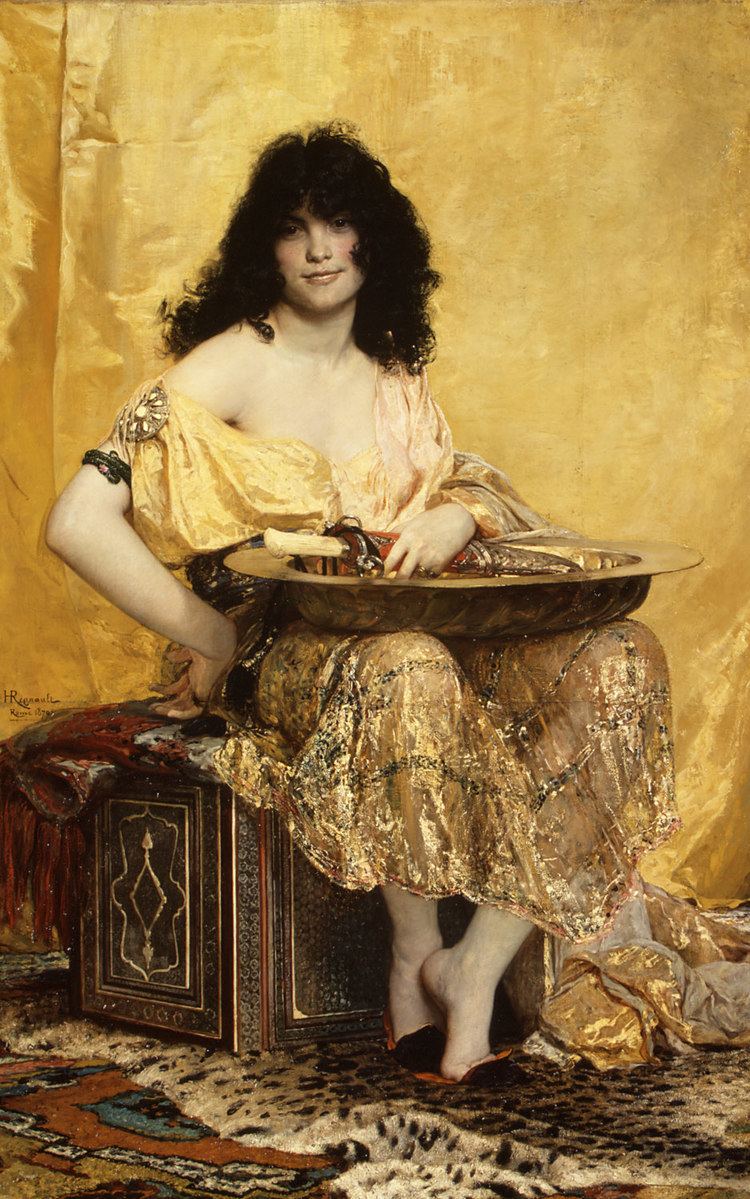
As Salome is not named in the gospel, she is sometimes referred to as "the daughter of Herodias", for example in the titles of paintings showing her.
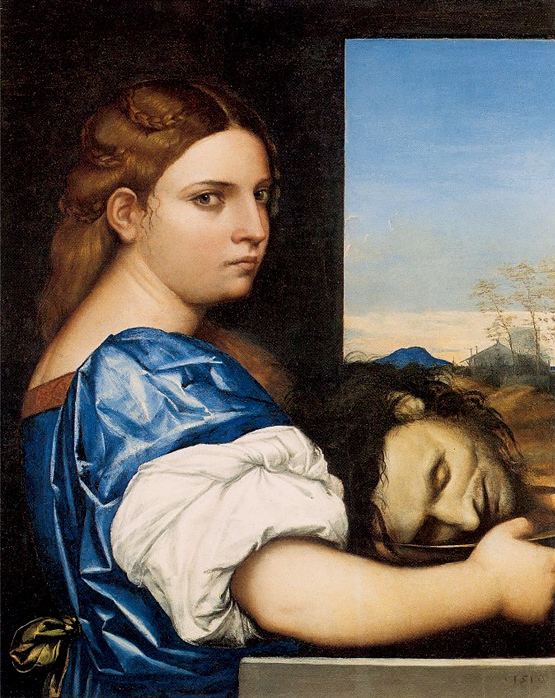
Salome's Dance
Salome in the arts

The story of her dance before Herod with the head of John the Baptist on a silver platter led medieval Christian artists to depict her as the personification of the lascivious woman, a temptress who lures men away from salvation. Christian traditions depict her as an icon of dangerous female seductiveness, notably in regard to the dance mentioned in the New Testament, which is thought to have had an erotic element to it, and in some later transformations it has further been iconized as the Dance of the Seven Veils. Other elements of Christian tradition concentrate on her lighthearted and cold foolishness that, according to the gospels, led to John the Baptist's death. A similar motif was struck by Oscar Wilde in his Salome, in which she plays the role of femme fatale. This parallel representation of the Christian iconography, made even more memorable by Richard Strauss' opera based on Wilde's work, is as consistent with Josephus' account as the traditional Christian depiction; however, according to the Romanized Jewish historian, Salome lived long enough to marry twice and raise several children. Few literary accounts elaborate the biographical data given by Josephus.

Despite Josephus' account, she was not consistently called Salome until the nineteenth century when Gustave Flaubert (following Josephus) referred to her as "Salome" in his short story "Herodias".
Painting and sculpture
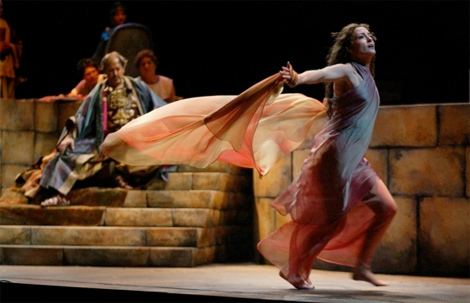
This biblical story has long been a favorite of painters. Painters who have done notable representations of Salome include Masolino da Panicale, Filippo Lippi, Benozzo Gozzoli, Leonardo da Vinci followers Andrea Solario and Bernardino Luini, Lucas Cranach the Elder, Titian, Caravaggio, Guido Reni, Fabritius, Henri Regnault, Georges Rochegrosse, Gustave Moreau, Lovis Corinth and Federico Beltran-Masses.
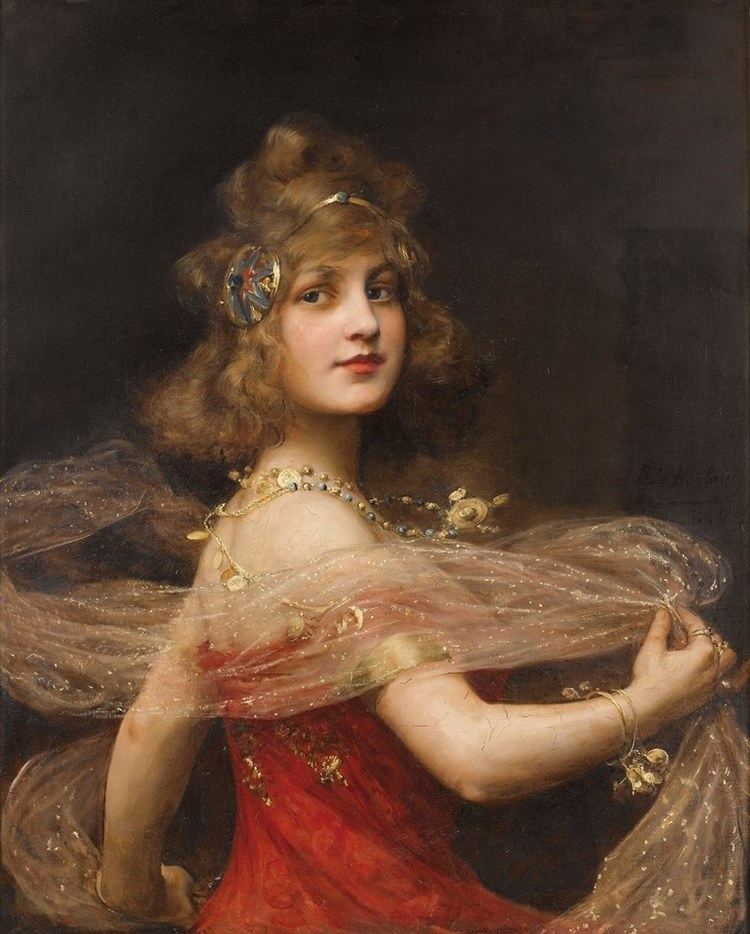
Titian's version (illustration c.1515) emphasizes the contrast between the innocent girlish face and the brutally severed head. Because of the maid by her side, this Titian painting, like others of the subject, is also considered to be Judith with the Head of Holofernes. Unlike Salome who goes nameless in the Christian bible, Judith is a Judeo-Christian mythical patriot whose story is perhaps less psychological and as she was a widow, may not be particularly girlish nor innocent in representations.

In Moreau's version (illustration) the figure of Salome is emblematic of the femme fatale, a fashionable trope of fin-de-siecle decadence. In his 1884 novel À rebours, Frenchman Joris-Karl Huysmans describes the depiction of Salome in Moreau's painting:
No longer was she merely the dancing-girl who extorts a cry of lust and concupiscence from an old man by the lascivious contortions of her body; who breaks the will, masters the mind of a King by the spectacle of her quivering bosoms, heaving belly and tossing thighs; she was now revealed in a sense as the symbolic incarnation of world-old Vice, the goddess of immortal Hysteria, the Curse of Beauty supreme above all other beauties by the cataleptic spasm that stirs her flesh and steels her muscles, – a monstrous Beast of the Apocalypse, indifferent, irresponsible, insensible, poisoning.
Sacred vocal music
Salome appears as a character in Alessandro Stradella's oratorio S. Giovanni Battista (St. John the Baptist), composed in 1676, which includes "Queste lagrime e sospiri", an aria sung by the Salome character.
Theatre and literature
In 1877 Gustave Flaubert's Three Tales were published, including "Herodias". In this story full responsibility for John's death is given to Salome's mother Herodias and the priests who fear his religious power. Salome herself is shown as a young girl who forgets the name of the man whose head she requests as she is asking for it. Jules Massenet's 1881 opera Hérodiade was based on Flaubert's short story.
The 1934 Fantasy novella A Witch Shall Be Born by Robert E. Howard, one of the Conan the Barbarian cycle, features an evil prehistorical witch named Salome, and it is clearly implied that she was an earlier incarnation of the New Testament character of the same name.
Oscar Wilde's play
Salomé's story was made the subject of a Symbolist play by Oscar Wilde that was first banned in London in 1892 while rehearsals were underway, and that subsequently premiered in Paris in 1896, under the French name Salomé. In Wilde's play, Salome takes a perverse fancy for John the Baptist, and causes him to be executed when John spurns her affections. In the finale, Salome takes up John's severed head and kisses it.
Because at the time British law forbade the depiction of biblical characters on stage, Wilde wrote the play originally in French, and then produced an English translation (titled Salome). To this Granville Bantock composed incidental music, which was premiered at the Court Theatre, London, on 19 April 1918.
Operas based on Wilde's play
The Wilde play (in a German translation by Hedwig Lachmann) was edited down to a one-act opera by Richard Strauss. The opera Salome, which premiered in Dresden in 1905, is famous for the Dance of the Seven Veils. As with the Wilde play, it turns the action to Salome herself, reducing her mother to a bit-player, though the opera is less centered on Herod's motivations than the play.
Shortly after the success of Strauss' opera, Antoine Mariotte created another opera based on Wilde's original French script. It was premiered on 30 October 1908 at the Grand Théâtre at Lyon. This opera was revived only in 2005 at the Montpellier Festival.
Ballet
In 1907 Florent Schmitt received a commission from Jacques Rouché to compose a ballet, La tragédie de Salomé, for Loie Fuller to perform at the Théâtre des Arts. Another Salome ballet was composed by the Japanese composer Akira Ifukube in 1948. Danish choreographer Flemming Flindt's ballet Salome with music by Peter Maxwell Davies premiered in 1978. Choreographer Arthur Pita was commissioned by San Francisco Ballet for his version of a Salome ballet in 2017.
Poetry
In "Salome" (1896) by the Greek poet Constantine Cavafy, Salome instigated the death of John the Baptist as part of a futile effort to get the interest of "a young sophist who was indifferent to the charms of love". When Salome presents to him the Baptist's head, the sophist rejects it, remarking in jest "Dear Salome, I would have liked better to get your own head". Taking the jest seriously, the hopelessly infatuated Salome lets herself be beheaded and her head is duly brought to the sophist, who however rejects it in disgust and turns back to studying the Dialogues of Plato.
Salome poetry was also written by, among others, Ai (1986), Nick Cave (1988), and Carol Ann Duffy (1999). Clementine von Radic's 2015 poem entitled "Salome Redux" tells the tale of Salome performing the "Dance of the Seven Veils" before King Herod. Salome is portrayed as a young intoxicating woman who, in exchange for performing this dance, asks for the execution of John the Baptist.
Songs
Songs about Salome were written by, among others, Archibald Joyce (1907, 1912), Tommy Duncan (1952), Karel Kryl (1965), Drs. P (1974), John Cale (1978), Kim Wilde (1984), U2 (1990), Andrew Lloyd Webber (1993), Liz Phair (1993), Kurt Elling (1995), Susan McKeown (1995), Mark St. John Ellis as Elijah's Mantle (1995), Old 97's (1997), The Changelings (1997), Loudovikos ton Anogeion (1997), The Residents (1998), Enrique Bunbury (1998), Chayanne (1999), Patti Smith (2000), Killing Miranda (2001), Gary Jules' "Pills" (2001), The Booda Velvets (2001), Stormwitch (2004), Flipron (2006), Xandria (2007), Pete Doherty (2009), Saltatio Mortis (2009), 9GOATS BLACK OUT (2009), Justin Vivian Bond (2011), Regina Spektor and Kaya (2012), Behemoth (2014), Wovenhand (2014), and Marriages (2015).
Film
Wilde's Salome has often been made into a film, notably a 1923 silent film, Salome, starring Alla Nazimova in the title role and a 1988 Ken Russell play-within-a-film treatment, Salome's Last Dance, which also includes Wilde and Lord Alfred Douglas as characters. Steven Berkoff filmed his stage version of the play in 1992.
In the 1950 film Sunset Boulevard, the principal character Norma Desmond is portrayed as writing a screenplay for a silent film treatment of the legend of Salome, attempting to get the screenplay produced, and performing one of the scenes from her screenplay after going mad.
Other Salome films include:
Television
In 1995, the hoax mockumentary Forgotten Silver by Peter Jackson and Costa Botes, claimed that fictional New Zealander film-maker Colin McKenzie produced the first-ever feature film on the life of Salome during the early part of the 20th century. The fake documentary includes substantial amounts of the purported film's footage that were created in modern times as part of the hoax.
Salome is the main antagonist of the fifth season of True Blood where she is portrayed by Valentina Cervi. In this version she is a vampire.
